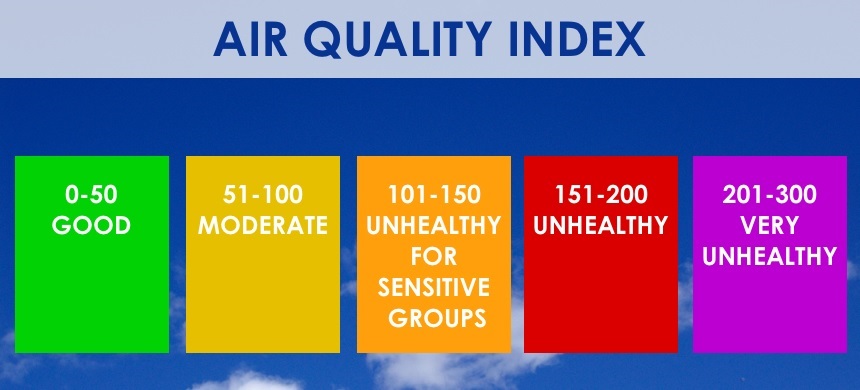Air Quality Index
The Air Quality Index (AQI) is a numerical scale used to communicate the quality of the air to the public. It is measured by assessing the levels of specific air pollutants in the atmosphere, such as ground-level ozone, particulate matter, carbon monoxide, sulfur dioxide, and nitrogen dioxide. The AQI scale typically ranges from 0 to 500, with higher values indicating worse air quality.
To measure the AQI, monitoring stations collect data on these pollutant levels, usually on an hourly basis. The concentration of each pollutant is then converted to an individual AQI value using a standardized formula, which takes into account the pollutant’s health effects at various concentrations. The highest individual AQI value among the pollutants measured at a given location becomes the overall AQI for that area.
Six Categories of Air Quality
The AQI is divided into six color-coded categories, each representing a different level of health concern:
- Good (0-50): Air quality is considered satisfactory, and air pollution poses little or no risk.
- Moderate (51-100): Air quality is acceptable; however, there may be a moderate health concern for a very small number of people who are unusually sensitive to air pollution.
- Unhealthy for Sensitive Groups (101-150): Members of sensitive groups, such as children, older adults, and people with respiratory or heart issues, may experience health effects. The general public is not likely to be affected.
- Unhealthy (151-200): Everyone may begin to experience health effects, and members of sensitive groups may experience more serious health effects.
- Very Unhealthy (201-300): Health alert, meaning everyone may experience more serious health effects.
- Hazardous (301-500): Health warnings of emergency conditions, as the entire population is more likely to be affected.
Various organizations and government agencies around the world have their own AQI systems, which might have slight differences in pollutant concentrations, breakpoints, and categories. However, the general concept and purpose remain the same – to inform the public about the air quality and any associated health risks.

